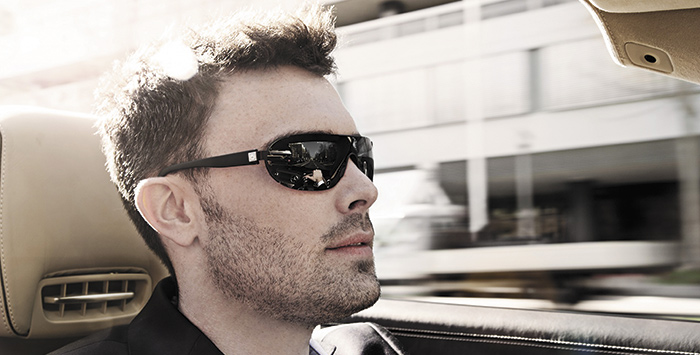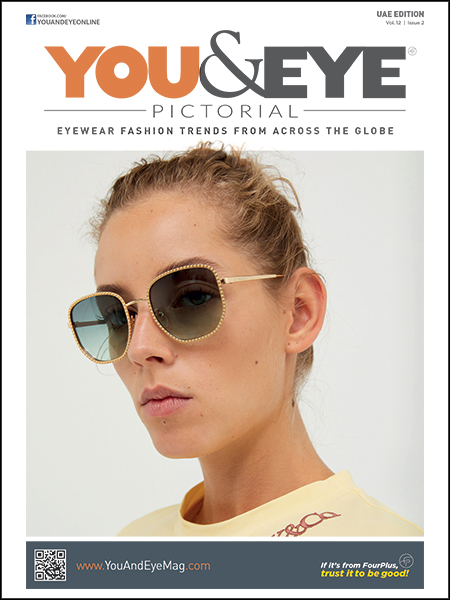Choose the right eyewear while driving, and say goodbye to that annoying glare, irritating reflection and bothersome halo!
Driving into the sunset is everyone’s idea of romance and we love it when the movie ends that way. It’s another story altogether when you have to drive into a bright and hot sun with the glare hitting right into your eyes. A lot of us have encountered this while cruising on Shaikh Zayed road and some of us were using the right eyewear while others may have been thinking that their sunwear is as good as it gets.
There’s a lot of misconception about eyewear amongst a lot of us, although we live in, probably the hottest regions in the world and knowing our eyewear is as important as knowing our camels.. sorry, cars! But although you might know that your car engine’s capacity and the type of tyres you’ve got on your car and maybe even the type of tint you have on your windscreen, a lot of us tend to ignore the technical details of our eyewear.
Driving During The Day
‘If it’s dark glasses it must be good for driving’ is the general thinking amongst most sunwear users. Nothing could be further from the truth. There’s a lot of research and development that lens companies have been investing in to protect our eyes and make our visual experience a whole lot better. And the technology at the forefront for this, in particular, is polarisation.
It’s been a long time since Polaroid was first invented but the technology is still relevant and is used by all sunwear which offer ‘polarised lenses’. Light is generally transmitted in waves and they vibrate and radiate in all directions. However, when they reflect off a surface, they tend to be strongest in a particular direction.. this could be horizontal, vertical or diagonal. This is referred to as polarisation. A polarised lens allows only the light that does not match its orientation. For example, light that’s reflected off a lake or a road on a highway is usually horizontal and this excess light is what causes glare. Polarized lenses in sunglasses are fixed at an angle that allow only vertically polarized light to enter. Your vision is so much better as all the excess light that would have blinded you is now filtered.
 Polarised lenses are a must for roads in the Middle East. And the best way to test if your lenses are polarised is to rotate the lens while viewing a reflective surface. At a certain point it will show the glare and while continuing the rotation it will cut out the glare. This is because at a certain point the filter’s alignment allows for the light waves, causing the glare, to enter. These lenses might be bothersome while trying to read the lit screen at an ATM machine or sometimes your dashboard display. However for protection against the sunlight, this is something that’s indispensable while driving. Even for those cruising the sea, this technology is very useful as the water is far more reflective than the roads.
Polarised lenses are a must for roads in the Middle East. And the best way to test if your lenses are polarised is to rotate the lens while viewing a reflective surface. At a certain point it will show the glare and while continuing the rotation it will cut out the glare. This is because at a certain point the filter’s alignment allows for the light waves, causing the glare, to enter. These lenses might be bothersome while trying to read the lit screen at an ATM machine or sometimes your dashboard display. However for protection against the sunlight, this is something that’s indispensable while driving. Even for those cruising the sea, this technology is very useful as the water is far more reflective than the roads.
There have been other technologies that are particularly beneficial like photochromic lenses. These lenses darken as per the surrounding light. The lenses grow darker when there’s more light i.e. outdoors and they lighten when it’s dark i.e. indoors. A great technology that’s useful in most other parts, its usability in this part of the world is not much as the factor that affects the darkening and lightening are the exposure to UV rays. Due to the UV protective screen protection that most cars use here, these lenses do not darken inside the car. However Drivewear lenses from Younger Optics claim to have resolved this problem with their award winning product. According to their claims, “Drivewear lenses provide glare protection through polarization and enhance and protect vision through photochromics which respond to both visible and UV light”
Driving At Night
Drivewear lenses do claim that they are effective in overcast weather, but what about driving at night? Well that’s another issue and you would be well advised to use clear lenses with AR coating. The AR coating cuts down the glare especially of the blinding headlights that can be really annoying, not to say dangerous.
Most lenses do come with an AR coating but choosing a good one is important. The technology for this too has been developing over the years and what you get today is far more advanced and has better cosmetics than products offered in the past. AR coating cuts off glare by allowing more light to pass through the lenses rather than reflect it back. This sharpens vision and reduces glare and even has a cosmetic benefit i.e. it allows your eyes to be more visible through the lenses. AR coating is generally applied even on sunglass lenses for the visual benefits.
Make sure you ask your optician to advise you the right products while you are shopping for eyewear for driving so that you can let the eyewear help you ‘keep your eyes on the road and your hands upon the wheel’… Happy driving!
Colour of the lenses do matter while driving. The factors that affect the choice of colours is based on the weather conditions. Here are a few pointers to help you choose the right one:
- Brown is the best all-round choice for driving where the lighting and weather conditions tend to vary greatly.
- Blue lenses are a good choice when there’s strong sunlight. They will increase contrast by filtering out more of the yellow light and improve clarity.
- Grey, like brown, is a neutral shade and would suit medium lighting conditions and is known to provide better color perception while on the road.
- Yellow is a good choice when the weather is overcast. It helps improve the contrast and is extremely helpful for driving at dusk.








